How The “Unexpected Red” Theory Can Enrich Your Garden Design
Discover how this bold new interior design trend has just as much impact in the garden, making planting schemes feel more accomplished and energized.
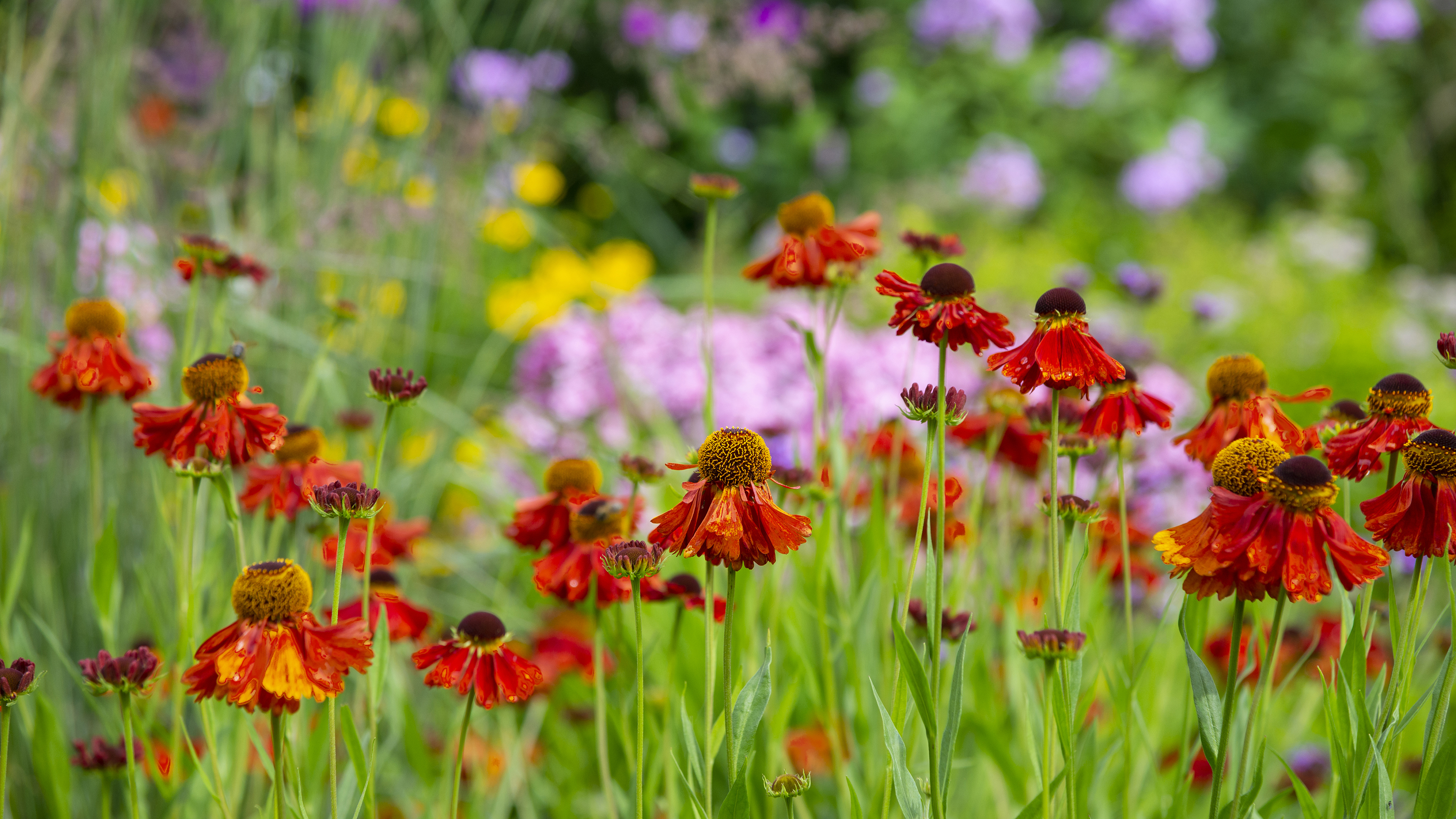

There is something deeply evocative about the color red. Whether a slick of ruby lipstick, a rosy apple, or a deep red rose, it feels at once powerful and delectable.
When added as an accent to a space, red adds energy and vibrancy. It doesn’t fail to grab your attention – and designers are becoming increasingly aware of its effect.
In recent weeks, the “Unexpected Red” theory has dominated interior design discussion on social media.
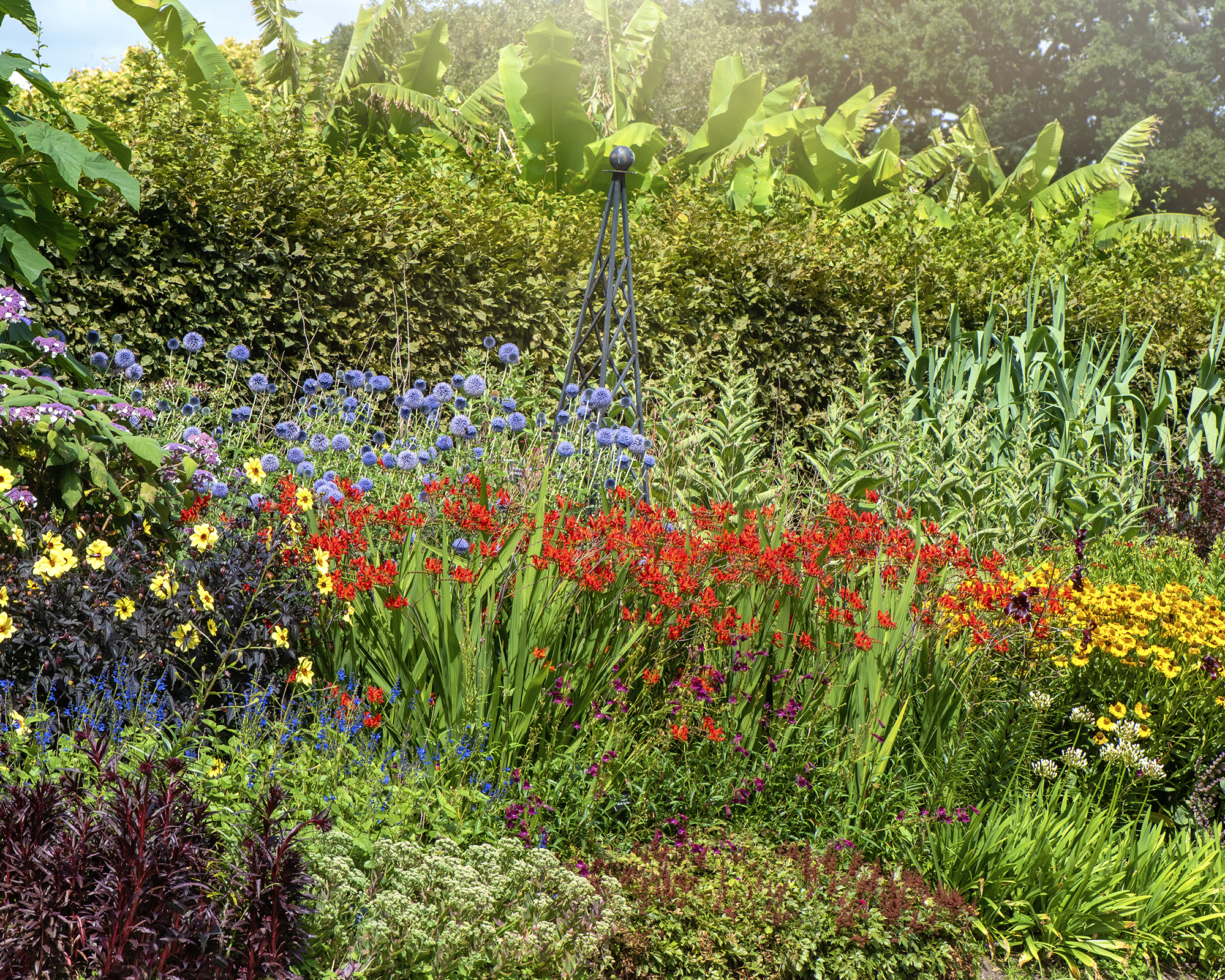
“The ‘Unexpected Red’ theory is basically adding anything that’s red – big or small – to a room where it doesn’t match at all, and it automatically looks better,” says Taylor Migliazzo Simon, who coined the phrase in a recent TikTok video that has been viewed nearly a million times.
The Brooklyn-based designer demonstrated how the color red worked in spaces where in theory it should not complement the existing scheme. Yet, somehow pulled the whole look together.
“I’m petitioning to make red a neutral color,” she says, “because it just looks good with everything.”
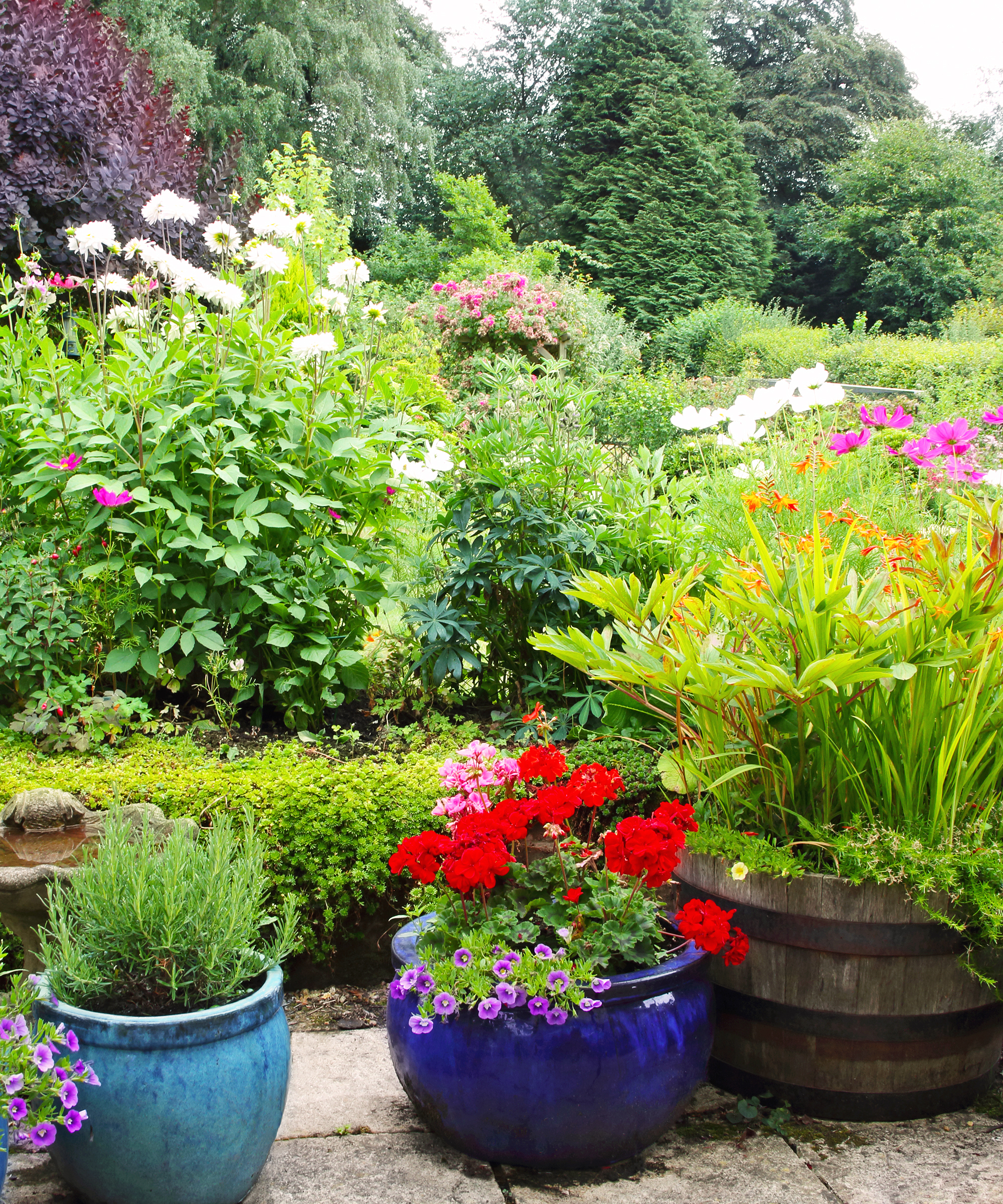
Applying the Unexpected Red theory to gardens
While in interiors, the idea of using red can be a brave choice, in gardens the color is often applied much more liberally.
Sign up for the Gardening Know How newsletter today and receive a free copy of our e-book "How to Grow Delicious Tomatoes".
Yet, when used more sparingly, red can really lift a garden design. “Reds are passionate and add strong focus to an area,” says gardening expert Leigh Clapp.
Instead of going all out with a red garden, consider adding one statement red plant among softer tones, a container to enliven a dull corner of the patio, or an accent tree in the middle of the lawn.
Happily, there is a wide choice of shades to choose from. “The tonal range of reds in nature is vast – from the young foliage of roses, berberis foliage, through to clear red poppies or claret and burgundy toned heucheras,” adds Leigh.
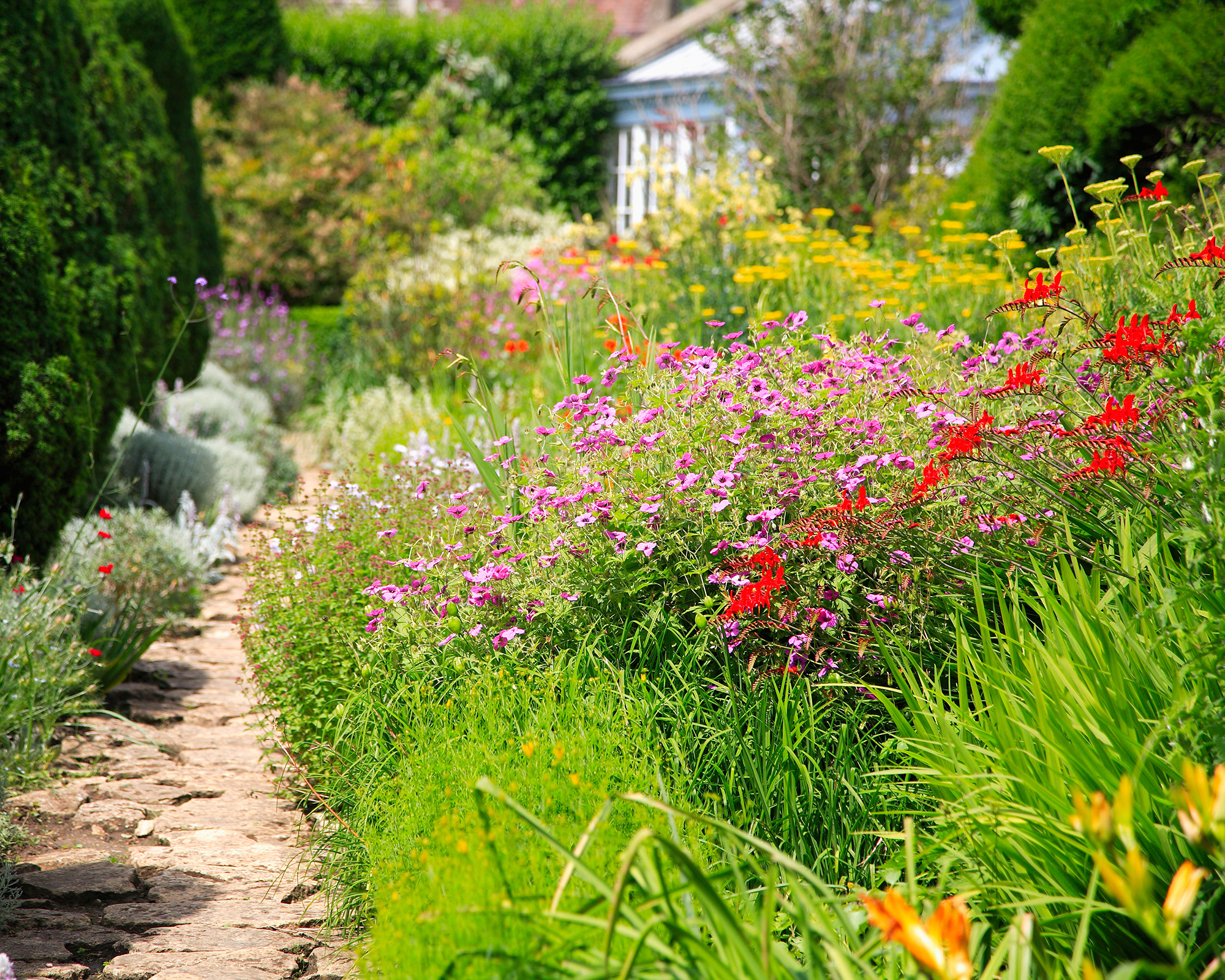
Using the color wheel
The reason red works so well in gardens is that it is opposite green on the color wheel.
“Complementary colours, or opposites on the color wheel, intensify – so red flowers look brighter against a green background,” explains Leigh. “It also works well with opulent purples.”
However, the nature of the Unexpected Red theory is that you can use the color with any scheme to add interest and tie the look together.
For example, a pop of red would add a passionate accent to a romantic cottage garden scheme filled with pastel pinks and purples.
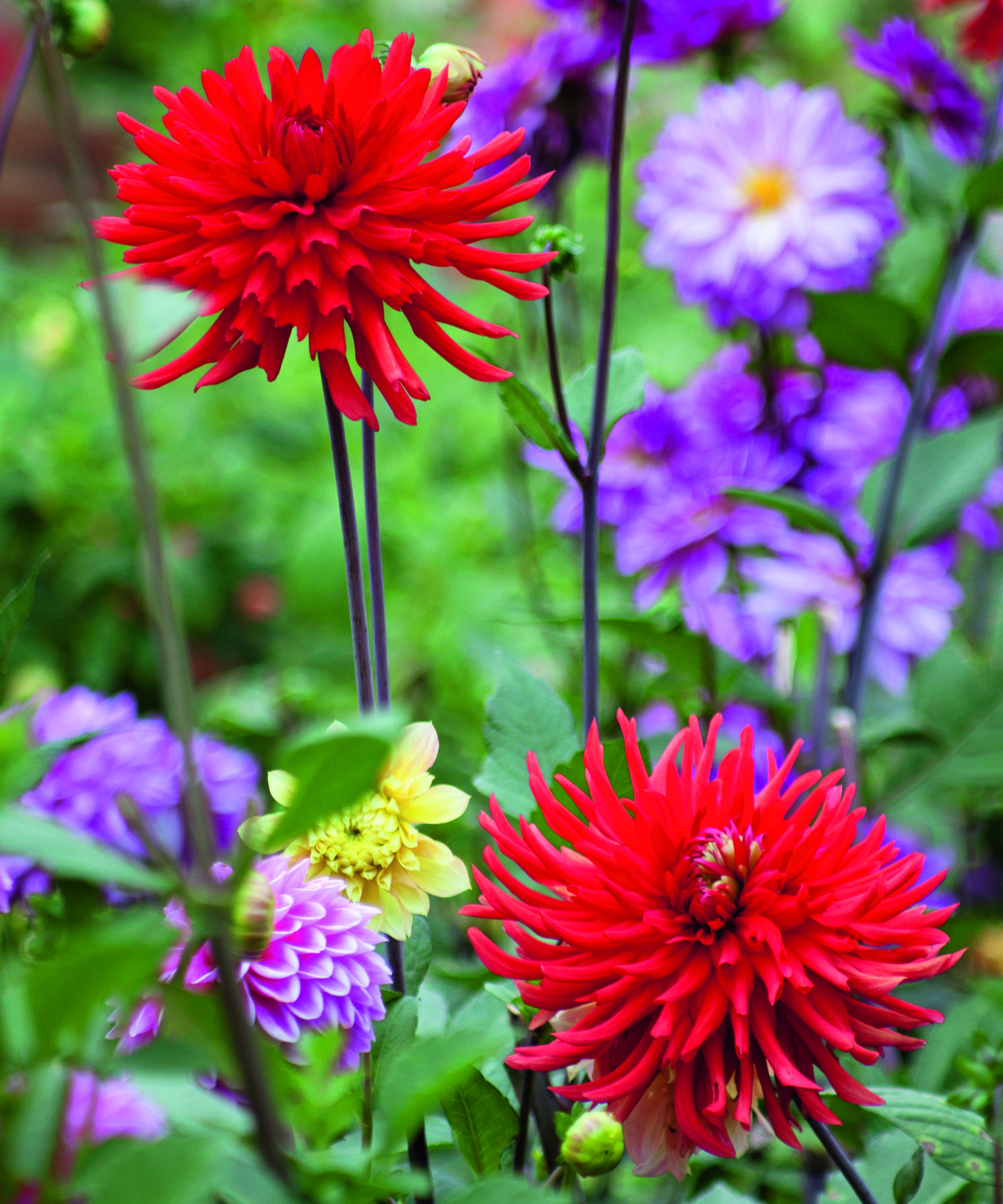
Red for all seasons
As gardens evolve throughout the year, you will need to think about how you can incorporate a pop of red in every season.
With thoughtful planning, new red plants can pop up to take the place of those that are dying down.

In spring, red tulips or ranunculus will add a welcome warming effect – guaranteed to lift your spirits after the gloominess of winter.
In summer the gardener is spoiled for choice, but striking flowers include zinnias, crocosmia, towing lupines, geraniums, and, of course, roses.
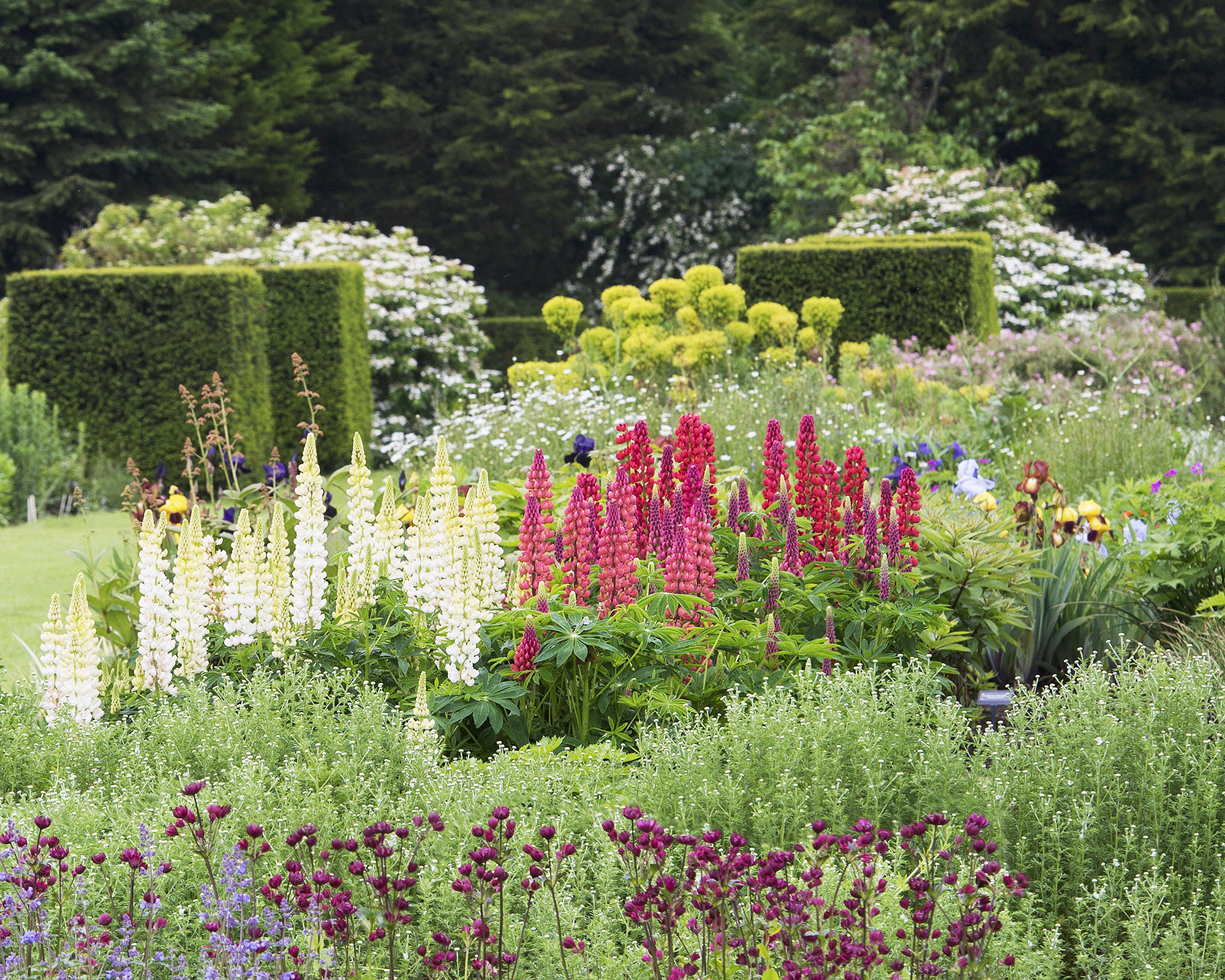
Don’t forget to include some red choices in the veg plot too – Swiss chard, beets, and nasturtiums will all add a ruby accent.
In fall, many deciduous trees and shrubs will turn to glorious shades of red before shedding their leaves – with perhaps the most striking choice being the Japanese maple.
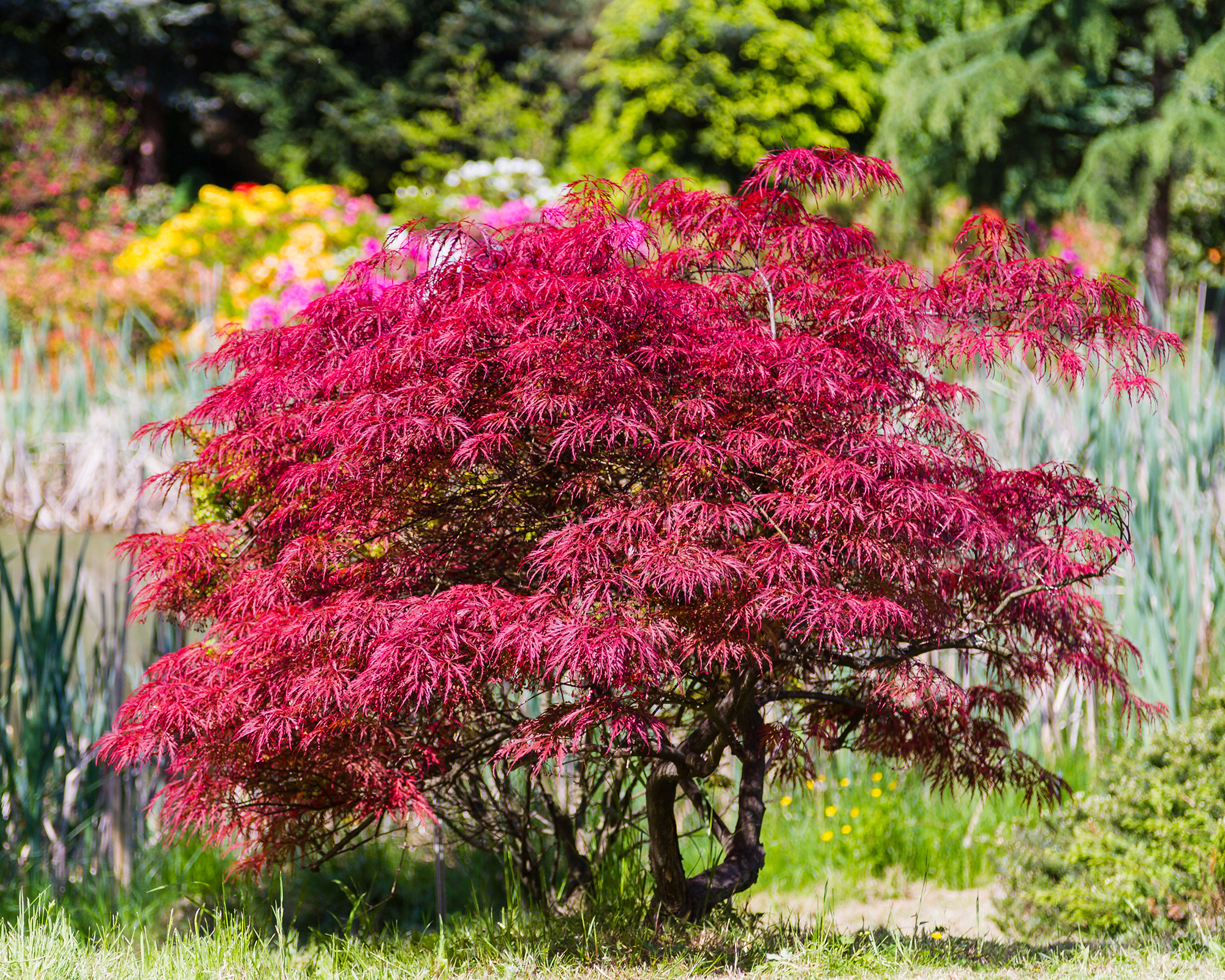
In terms of fall flowers, red dahlias, chrysanthemums, and asters will pack a punch when most flowers are winding down for the year.
In winter, the landscape can feel bleak – so the fiery branches of red-twig dogwood or bright red berries of holly, wintergreen, or firethorn, will add a welcoming focal point to the landscape.
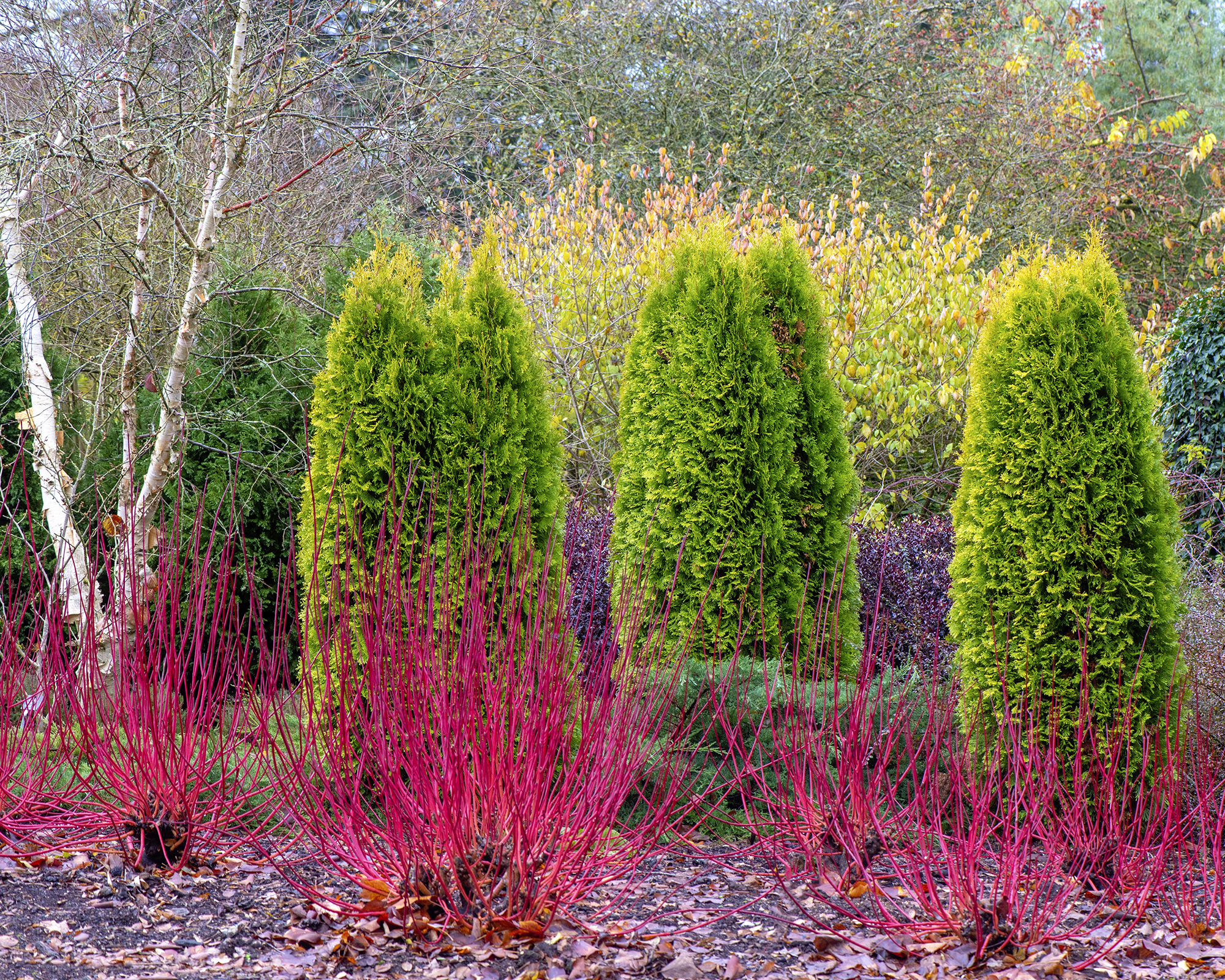
Don't forget to accessorize
Another way to introduce Unexpected Red into your garden is through paintwork and accessories.
Consider the impact a red garden gate can make, a planter, or even a painted pergola or bench.
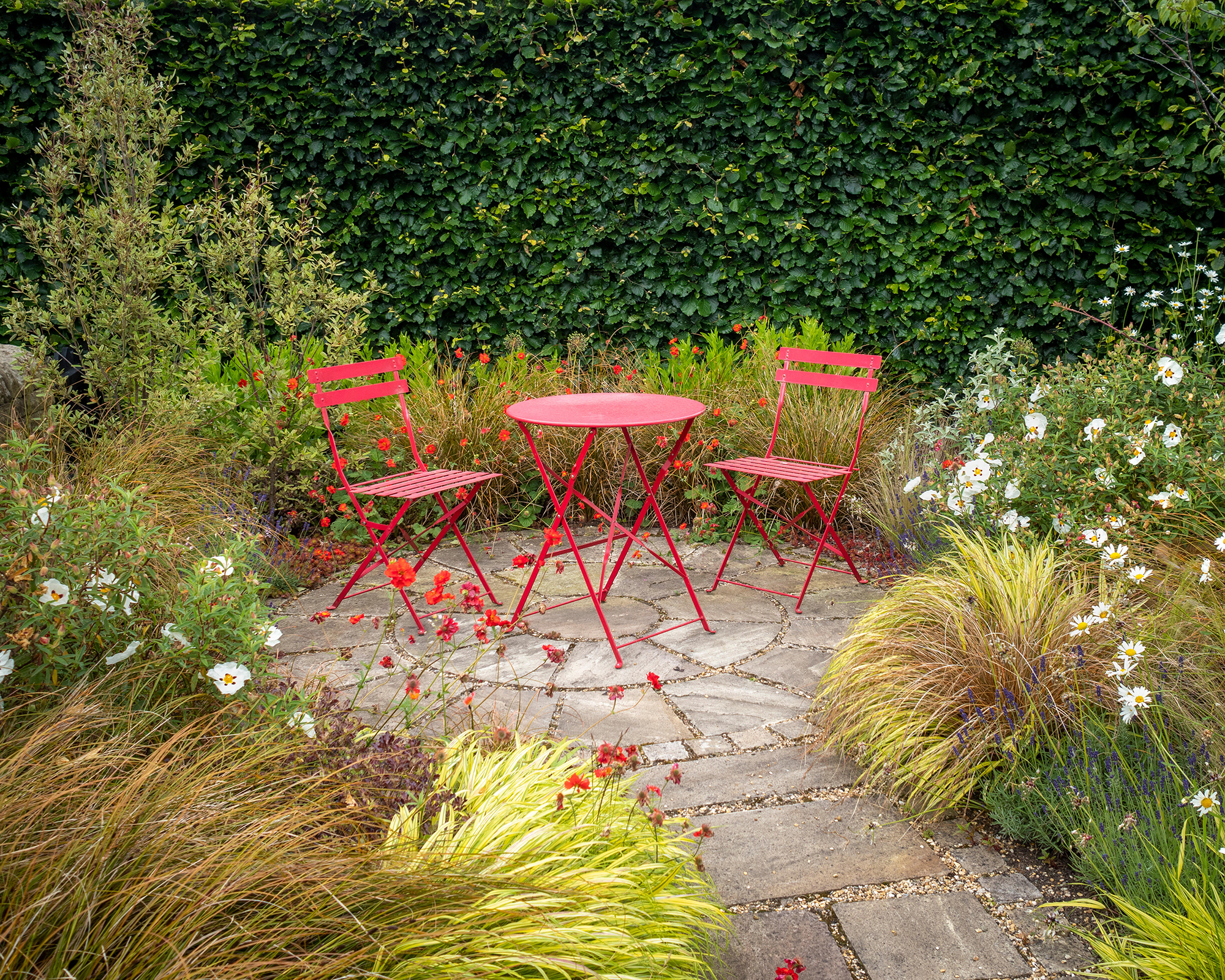
Red powder-coated metal seating makes a stylish choice for outdoor dining in a secluded corner of the garden, drawing you in.
There are so many opportunities to add a surprising pop of red to the garden – have fun experimenting with this stylish design trend.

Melanie is an experienced gardener and has worked in homes and gardens media for over 20 years. She previously served as Editor on Period Living magazine, and worked for Homes & Gardens, Gardening Etc, Real Homes, and Homebuilding & Renovating. Melanie has spent the last few years transforming her own garden, which is constantly evolving as a work in progress. She is also a passionate organic home grower, having experimented with almost every type of vegetable at some point. In her home, Melanie tends to an extensive houseplant collection and is particularly fond of orchids.